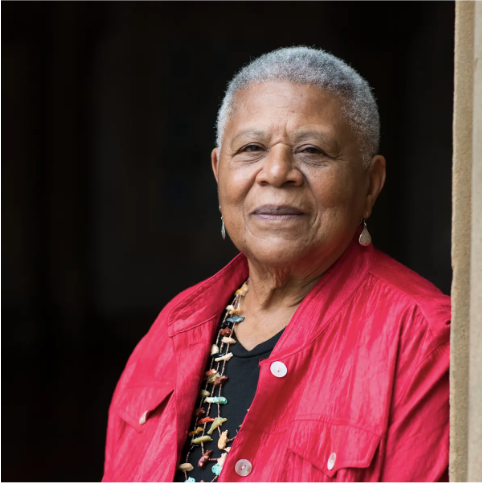
On October 13, 2023, Minnijean Brown-Trickey, a member of the Little Rock Nine and a seasoned public speaker, visited Hastings High School. Her trip included a visit to all of the schools in the Hastings UFSD. It concluded with a dedication ceremony that renamed a portion of Mount Hope Blvd to Drs. Mamie and Kenneth Clark Way in remembrance of “the long-time Hastings residents and civil rights luminaries,” according to the Hastings Historical Society flier.
Brown-Trickey grew up in Little Rock, Arkansas, where she was one of the nine Black students who integrated Little Rock Central High School in 1957. Her motivation for integration was that “deep conviction comes as a result of the opposition,” as she explained in an interview. She had high hopes for the success of the venture, stating her belief that her peers would be accepting: “[They] are going to see how great I am and the kids are going to be like me and they’re going to be curious.” Unfortunately, the reality turned out to be different.
Even though the integration had previously been given the go-ahead, Governor Orval Faubus of Arkansas deployed the Arkansas National Guard the morning of the integration to stop it. After more than two weeks, President Dwight D. Eisenhower sent the 101st Airborne Division of the United States Army to enforce integration and to protect the students.
Once inside, the opposition didn’t stop, however, and white students bullied members of the Nine. They verbally and physically harassed the students, and Brown-Trickey was the first member of the Little Rock Nine to be suspended because she fought back against her harassers. Eventually, the situation escalated so much that she was expelled, and she moved to Hastings to live with Drs. Mamie and Kenneth Clark.
She didn’t spend much time in the town of Hastings itself, as she “went outside of Hastings for recreation” and school. For the second half of 11th grade and all of 12th grade she attended the New Lincoln School in Manhattan.
The visit to Hastings this past month was not her first since she initially left, as she came back about seven years ago to show her daughter around the town. However, this is the first time that she presented her story to Hastings schools, and the visit is specifically in honor of the renaming of Mount Hope Blvd. and the recognition of the Clarks on a villagewide level.
Brown-Trickey now lives in Canada, has six kids, and has dedicated her life to social action, traveling around the world to advocate for racial equity, nonviolence, and minority rights (she has spoken in every U.S. state save for Wyoming). Brown-Trickey was the Deputy Assistant Secretary for Workforce Diversity at the Department of Interior for the Clinton administration and received numerous awards for her advocacy, including the Congressional Gold Medal and the NAACP Spingarn Medal. Speaking at the HHS assembly on October 13, Brown-Trickey stated that she “can’t imagine not being an activist” after her experience at Little Rock.
When asked about her advice for high schoolers today, Brown-Trickey stated that she imagines it must be hard to be a student now, as information and world events are shared more frequently and at a faster pace. However, Brown-Trickey has confidence in the next generation to make the world a better place. She says that she “likes to be with young people,” as they give her hope for the future: “I see their openness, I see their enthusiasm.” Although Brown-Trickey doesn’t “like to throw the responsibility of social change on young people,” she thinks they “have to say enough of this is enough” to the injustices of the world.
And how to do this? Minijean Brown-Trickey’s advice for us all is to “see our common humanity.”


















